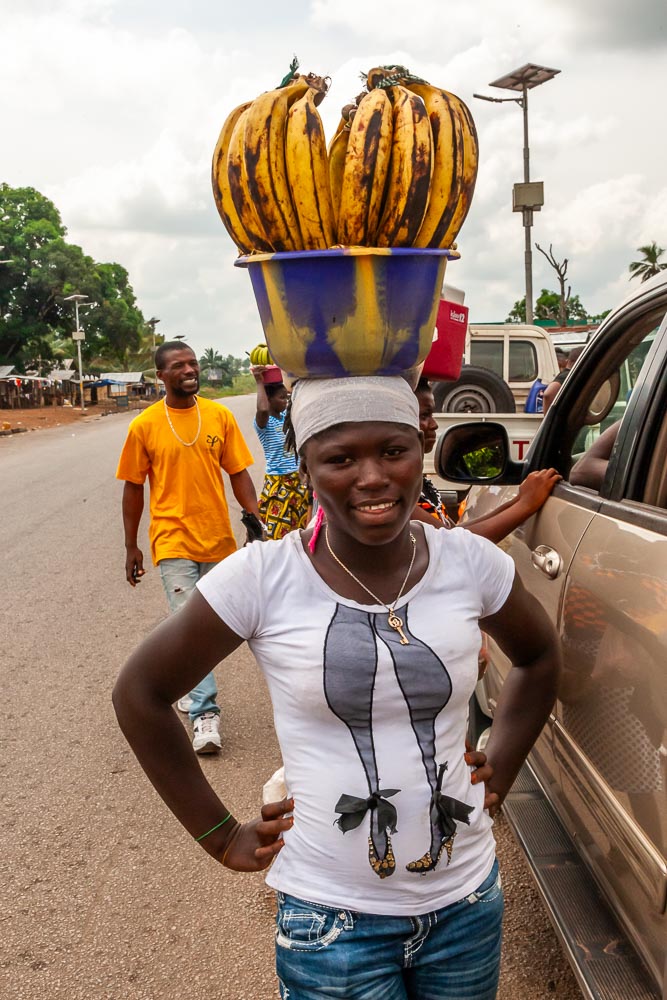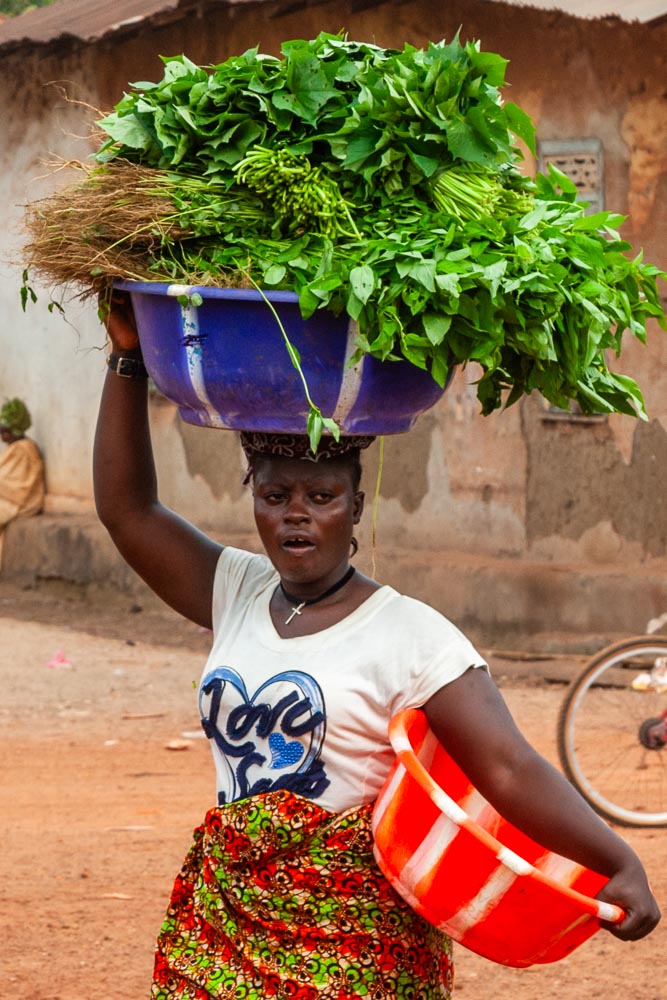As soon as you leave the hotel behind, you are already in the middle of it. Surrounded by people who all have something to offer. Drinks, snacks, phone cards, but also things for which a tourist has no use at all. Manioc tubers for example or huge fish. Freshly caught and certainly worth their money. Almost everything is carried in colorful bowls on the head and is thus not to be overlooked even in the crowd. Sellers do not have to be searched for long, because they make eye contact with potential buyers directly under the goods.
The eye also eats in Sierra Leone – the staging is also important / © Photos: Georg Berg
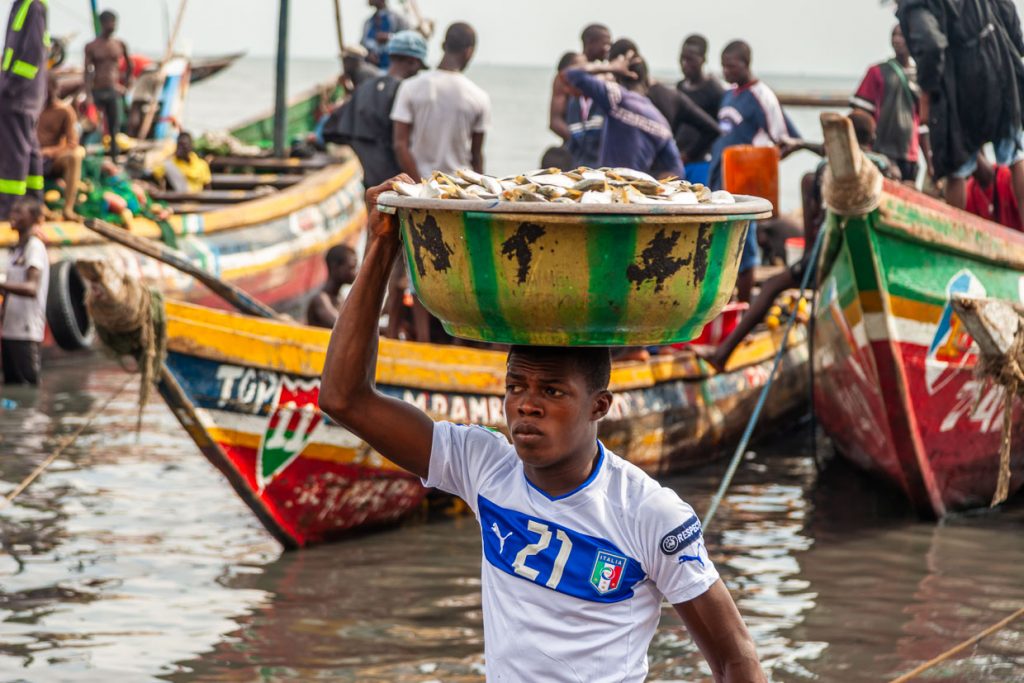
Finger food at its best
Roasted corn on the cob, fresh peanuts, mangos or thin long banana chips in quantities that can be consumed immediately should not be missed, nor should coconut milk from the freshly cracked nut.
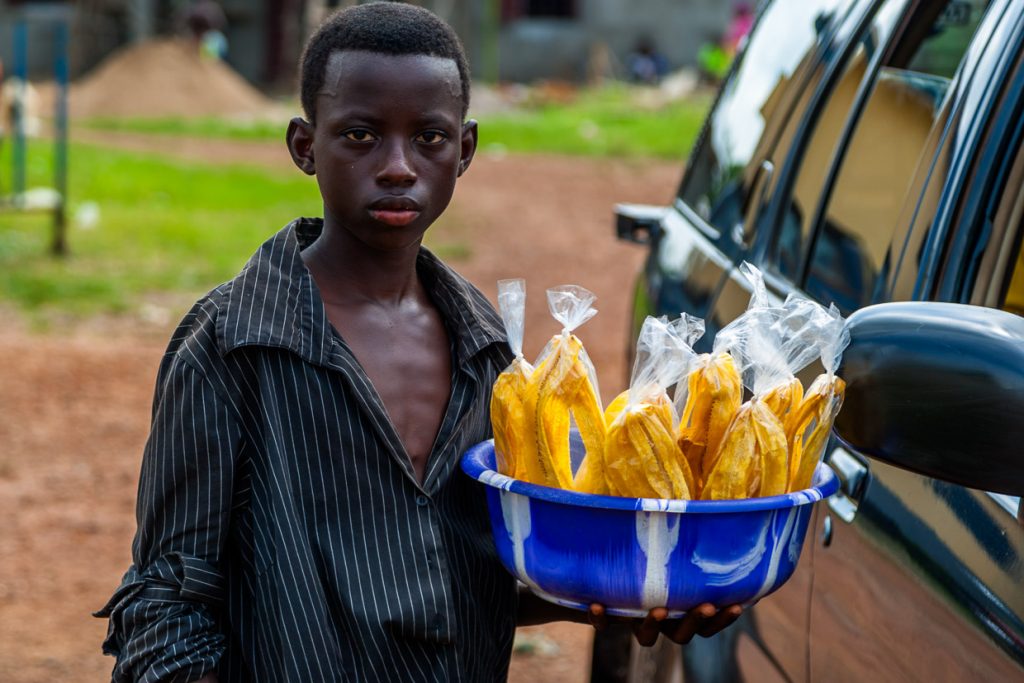
Mental back training
The skill of people balancing their purchases home even on their heads makes their own posture better just looking at them. Despite the heaviest loads, there are no collisions in the dense crowd.
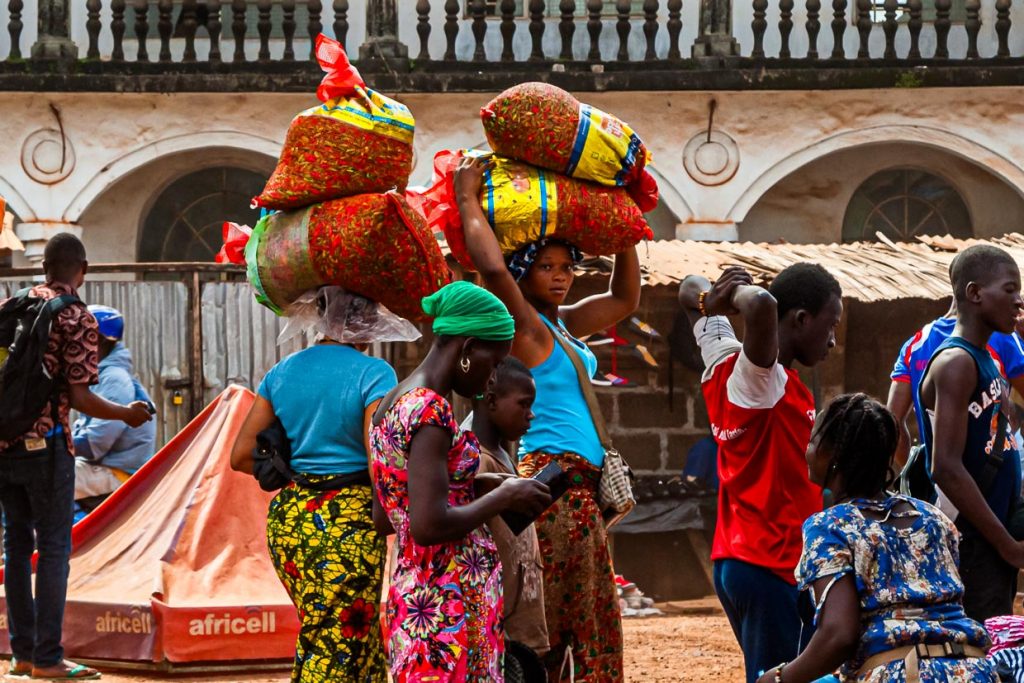
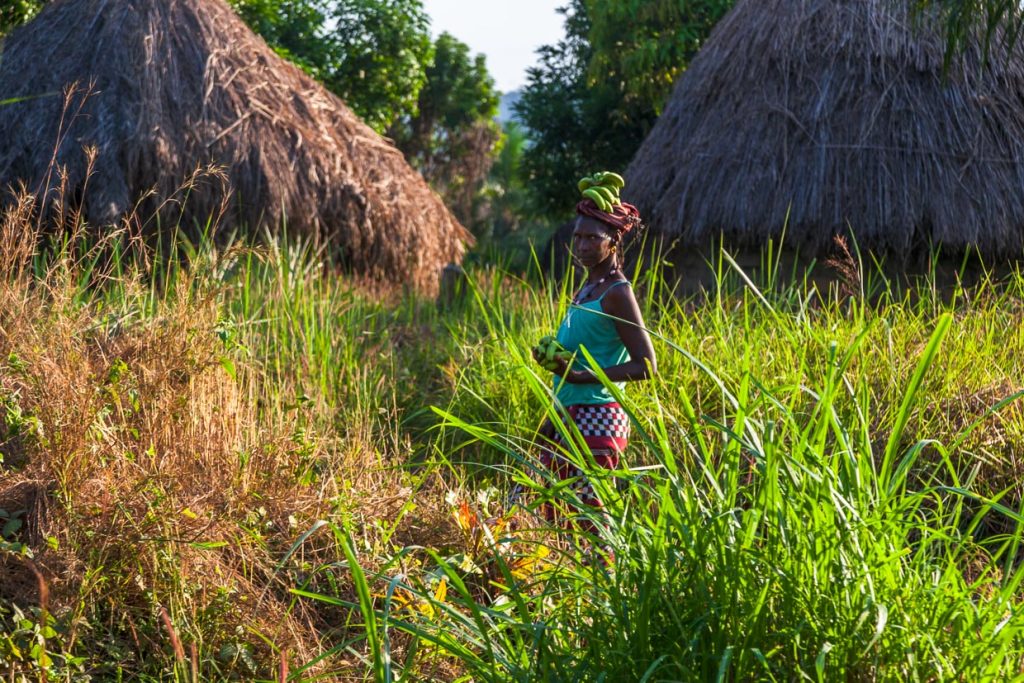
With so much on offer, it is hard to believe that the supply situation in Sierra Leone was very critical just a short time ago. During the Ebola epidemic, which lasted until the end of 2015, public life came to a standstill and agriculture could also no longer be practiced. This caused a shortage of crops at the time and continues to have an impact on seeds today.
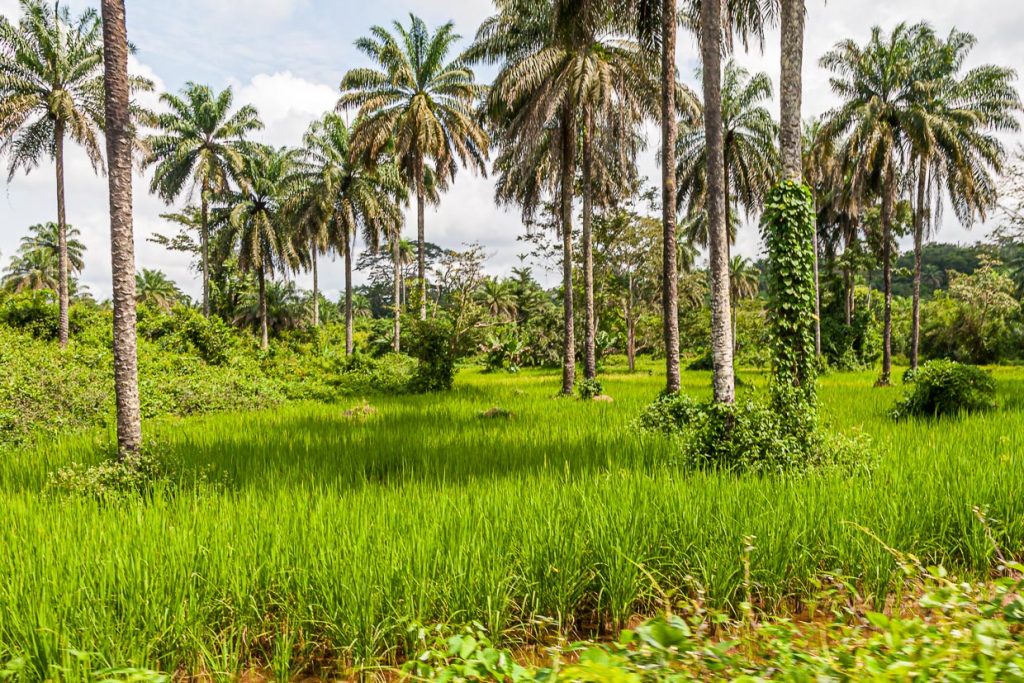
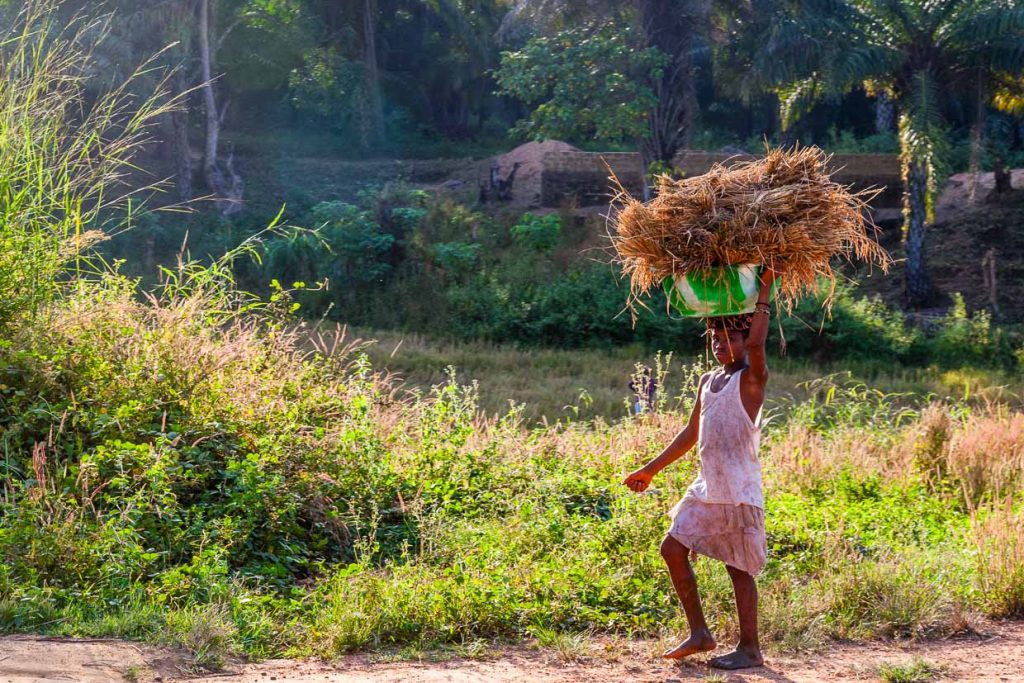
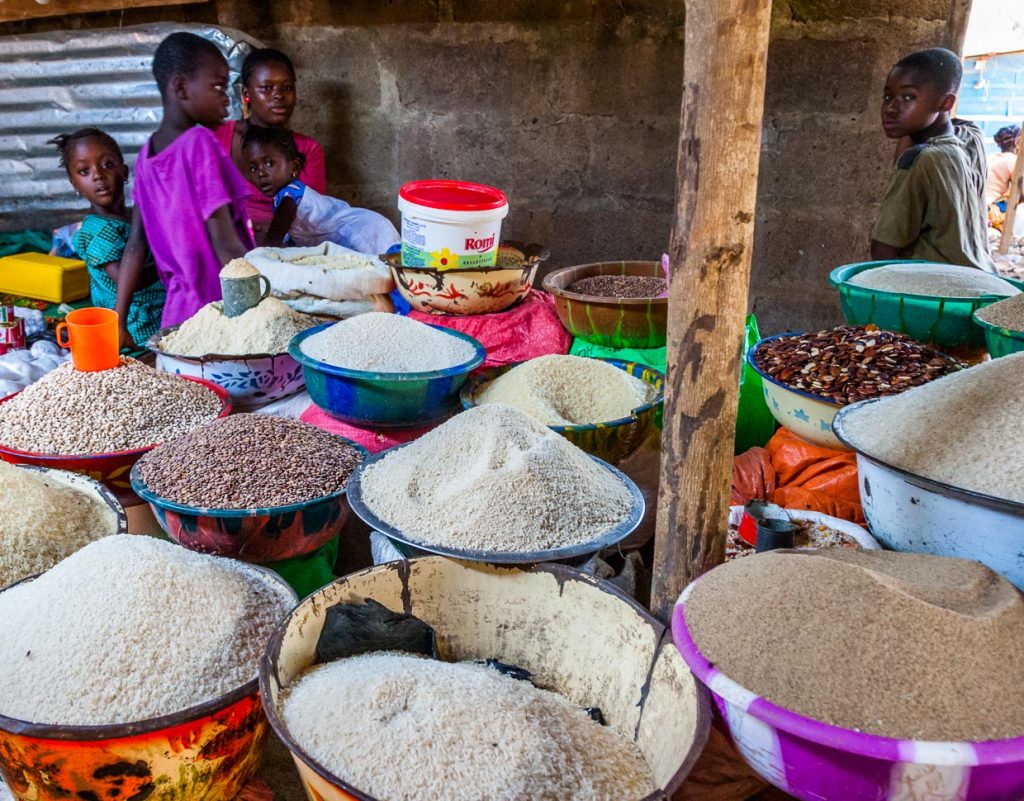
Fish – good and rich in protein
The coastal town of Tombo, near Freetown, is the center of Sierra Leone’s fishing industry. 700 small fishing boats go out to sea every day and each of them provides work for 50 people. It is the fishermen, but also the young men, who unload the fish on the beach. They each carry 30 kg of fish in bowls on their heads. On land, these fish are then sorted and sold by women.
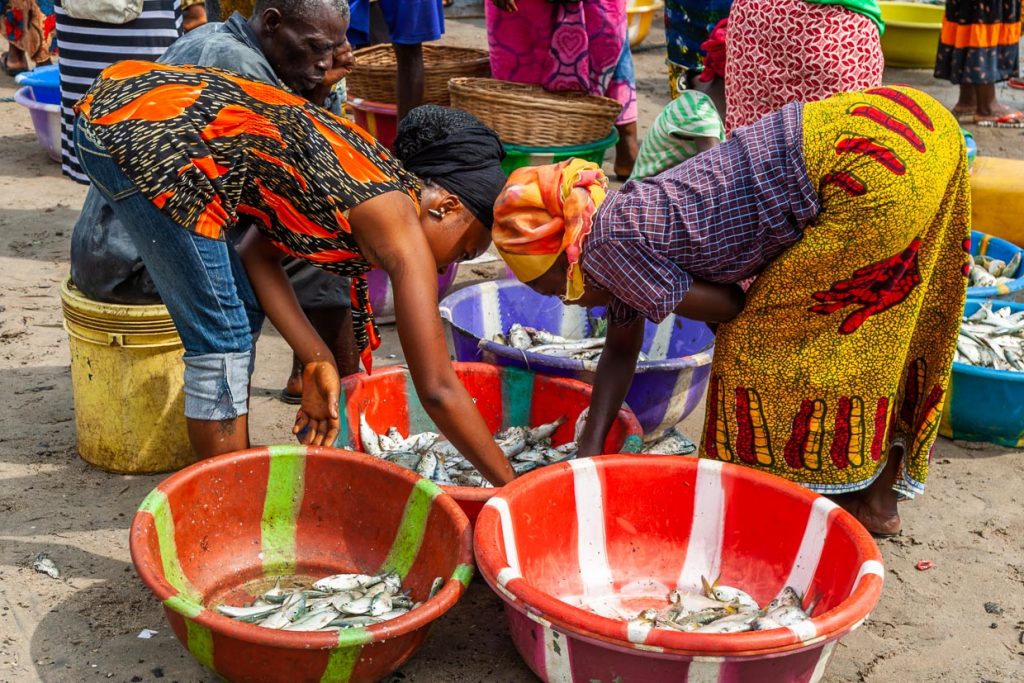
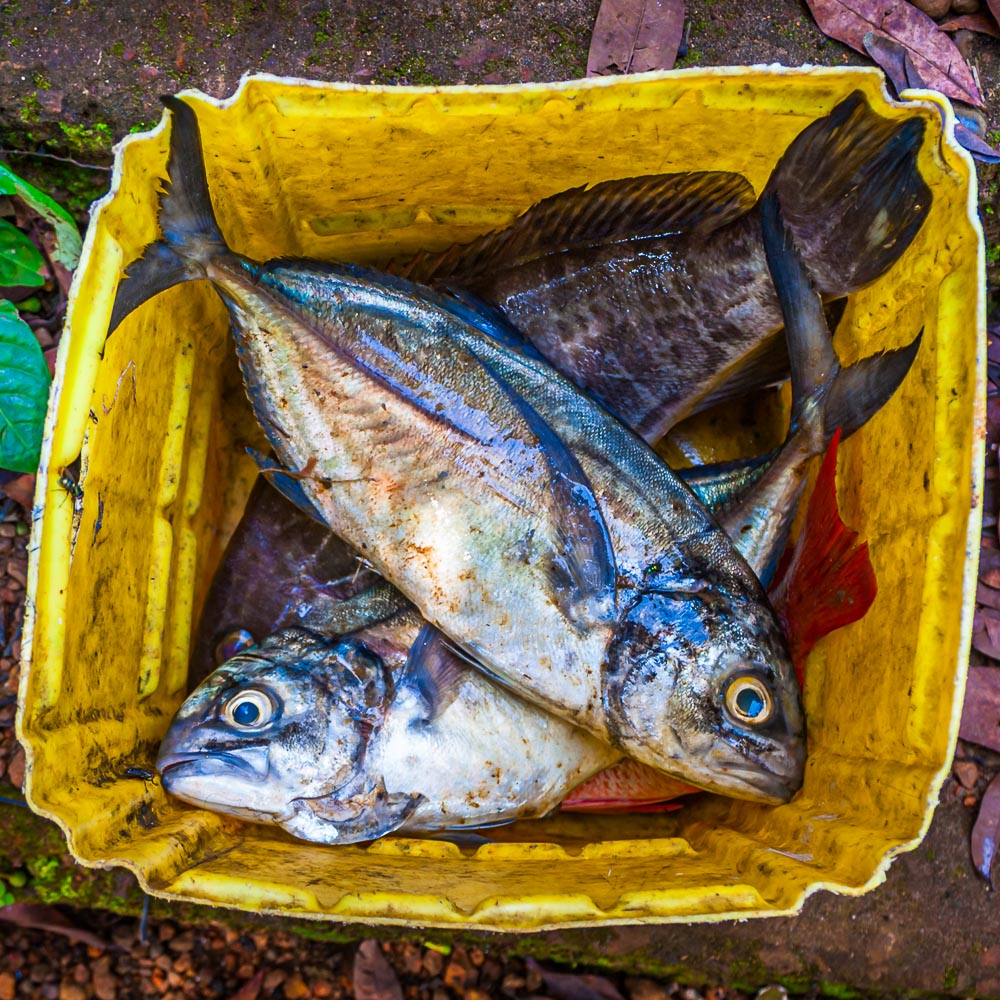
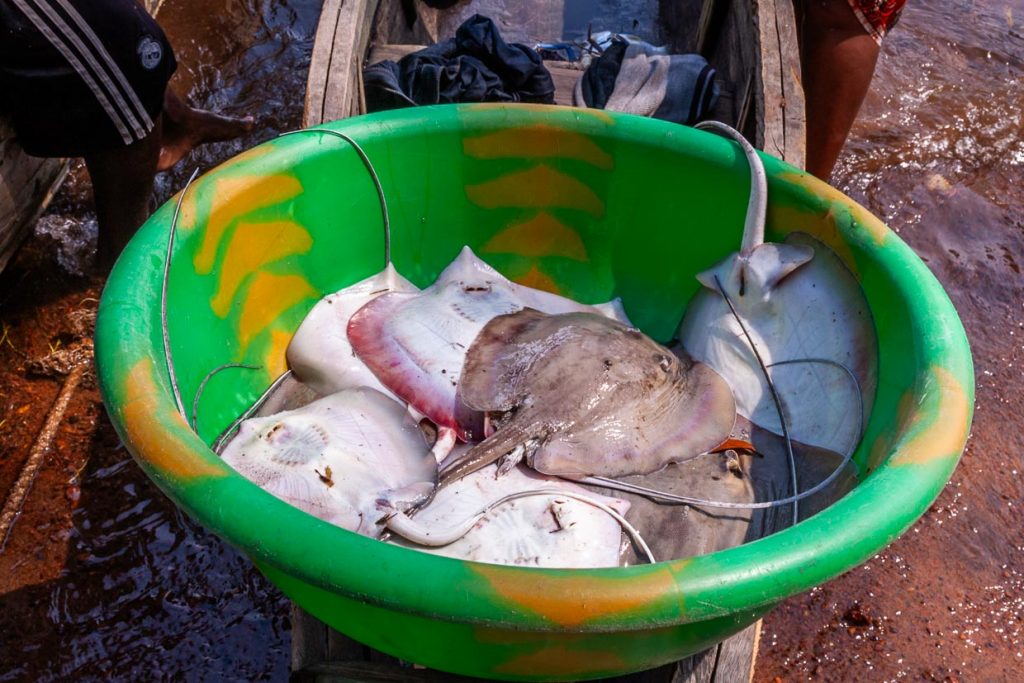
But these processes, which have been well-rehearsed for generations, are in danger because large fishing fleets are increasingly approaching coastal areas from international waters in an uncontrolled manner. In doing so, they not only empty the fishing grounds. Fishermen have also complained to us about cut nets.

But Tombo is also known in Sierra Leone for its soccer academy, where boys and girls receive first-class schooling as well as soccer training at the highest level.
French cuisine in Sierra Leone
At idyllic Mama Beach, we met Manuel Geslain, who moved from France to the specialty restaurant Eden Park Resort in 2010. Geslain started out as a chef in Grenoble. Via Bordeaux, his path led him to Paris to the legendary Hôtel de Crillon, where he was responsible for the starters. In Sierra Leone, his cuisine continues to have a French influence. He even imports many ingredients from Europe. In Sierra Leone, Gaslain is particularly enthusiastic about the quality of the fresh fish, and he recently started a small herb farm. He particularly raves about lobster, grouper, Atlantic bonito, barracuda, mangrove bass, plaice and shrimp.
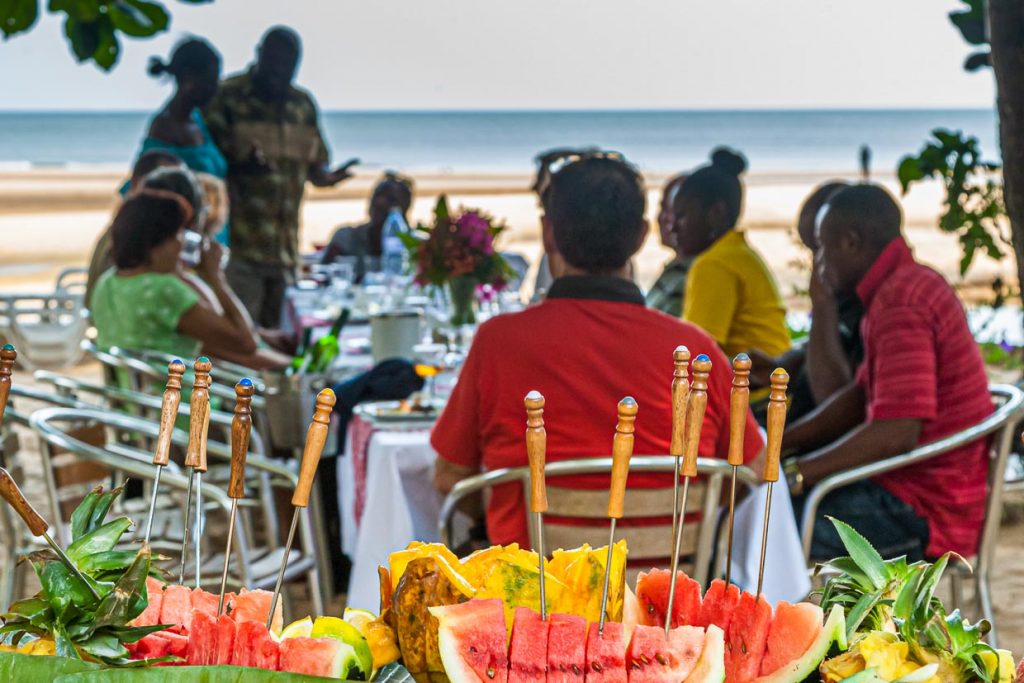
After eleven years of civil war, the flow of tourists to Sierra Leone slowly resumed since 2002. However, the Ebola epidemic abruptly halted the upswing in 2014. Geslain nevertheless stayed in the country and cooked for a British aid organization that took up quarters in the Eden Park premises.
No refrigerator or running water
In Sierra Leone, food is sold only fresh or dried, and only in quantities needed for daily consumption. Refrigerated or industrially packaged products and supermarkets are scarce, even in the larger cities. In rural areas, few homes have electricity or running water.
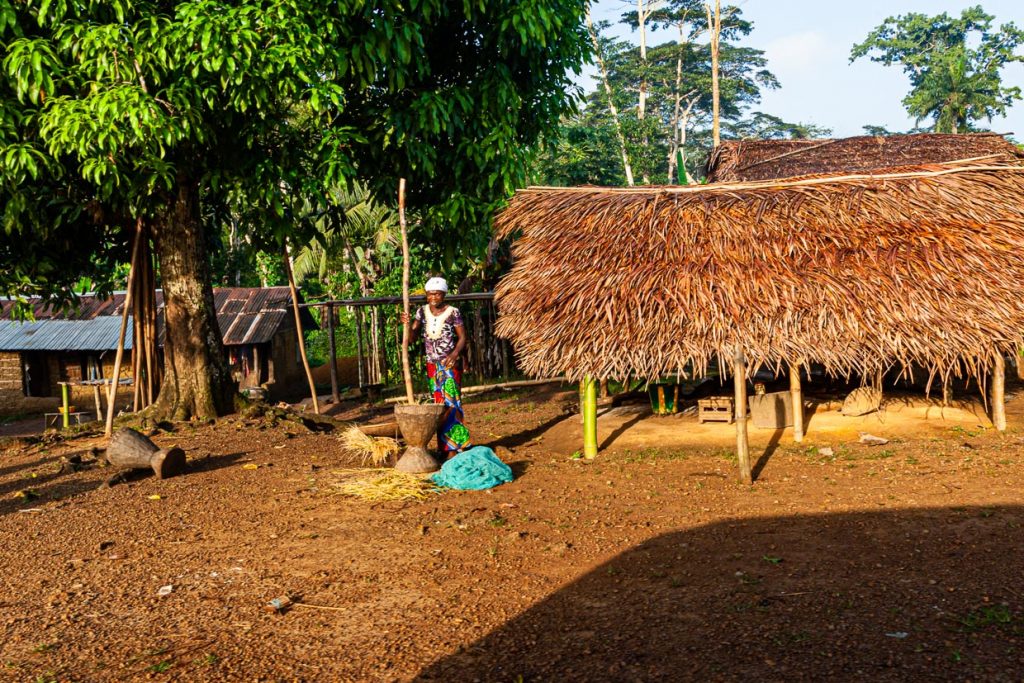
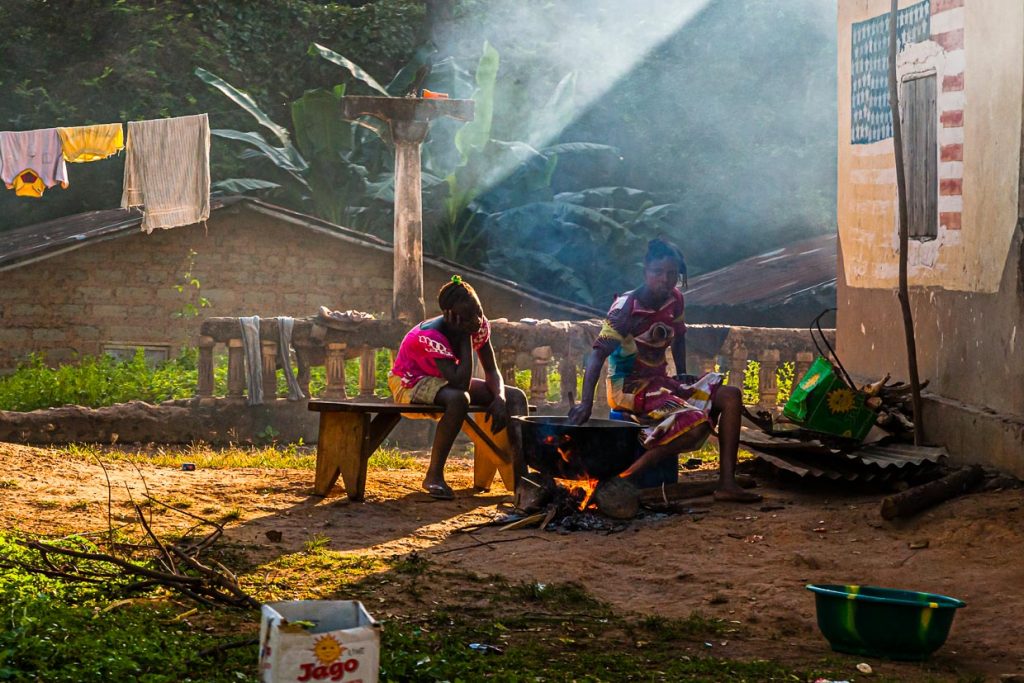
Stews do not have to be monotonous
Typical of Sierra Leonean cuisine are spicy thick sauces that are eaten with local gray brown rice or cassava roots. Leafy vegetables, local red palm oil, red and green chili peppers or peanuts are the main ingredients of most stews.
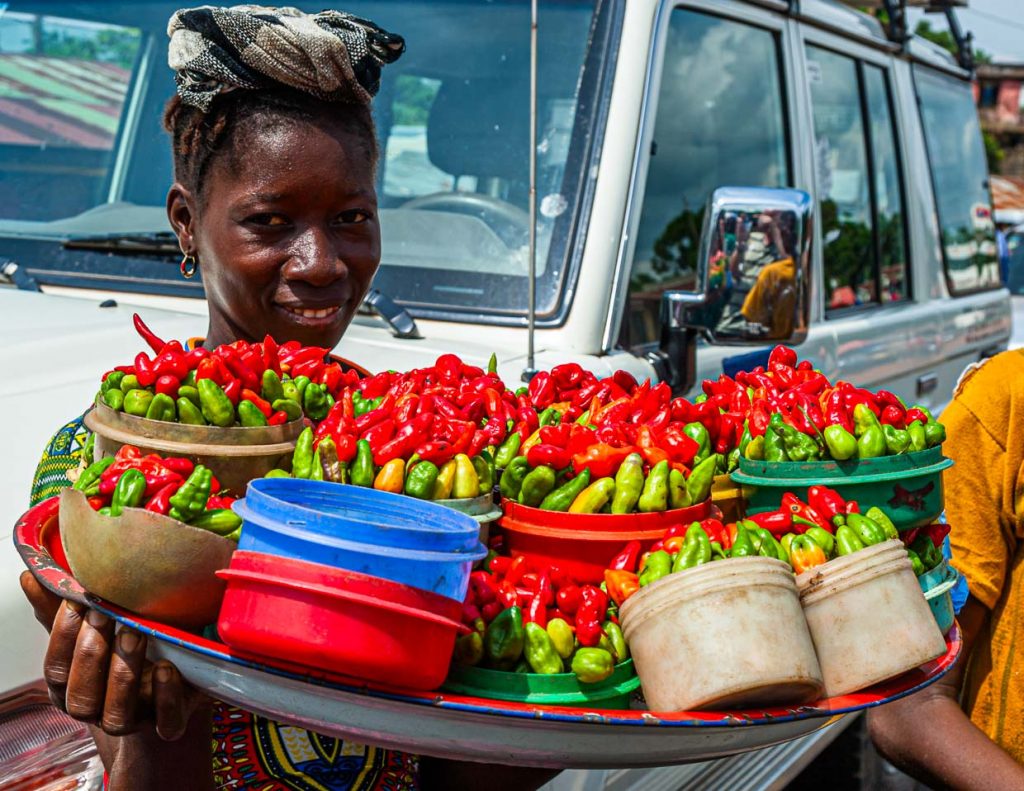
Cassava leaves, along with potato and jute leaves, are optional leafy vegetables for green sauces. In local eateries, they are served on a set rotation on different days of the week: cassava on Mondays, potato leaves on Tuesdays, and jute leaves on Wednesdays.
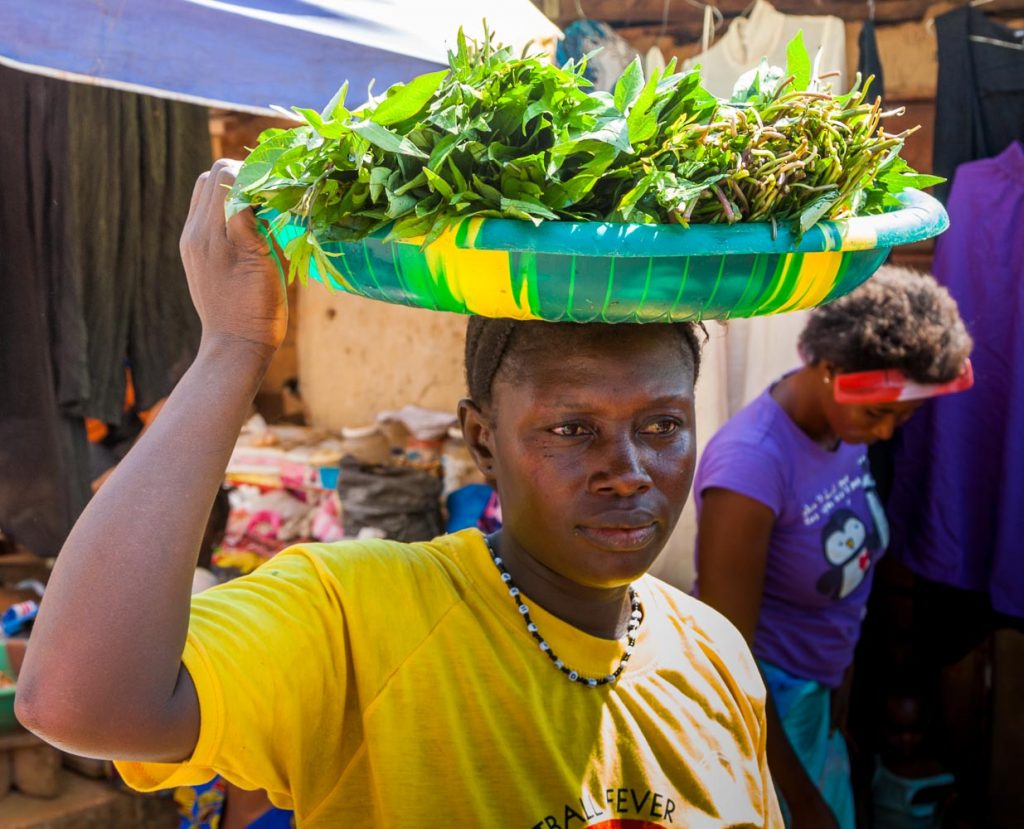
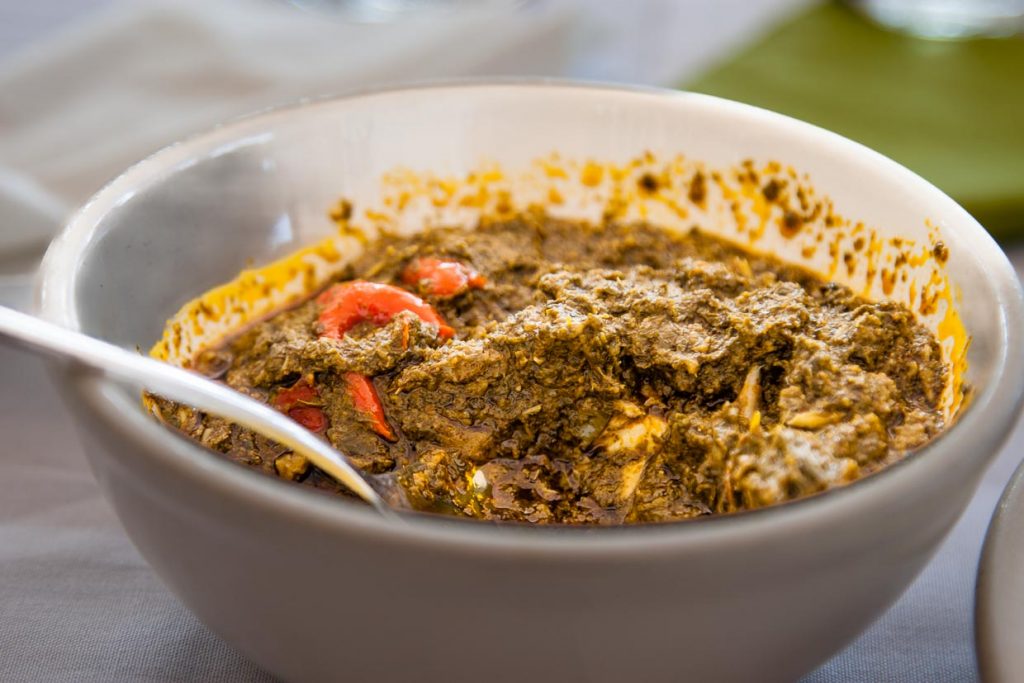
The thing with the soup cube
Meat or fish are among the better dishes and in the unfavorable (more common) case soup cubes. The small colorful cubes are ubiquitous even in the most remote settlements. This Western influence has largely supplanted sounbareh, traditional in Sierra Leone, as a condiment. It consists of fermented carob seeds. The variant ogeri consists of fermented sesame seeds.
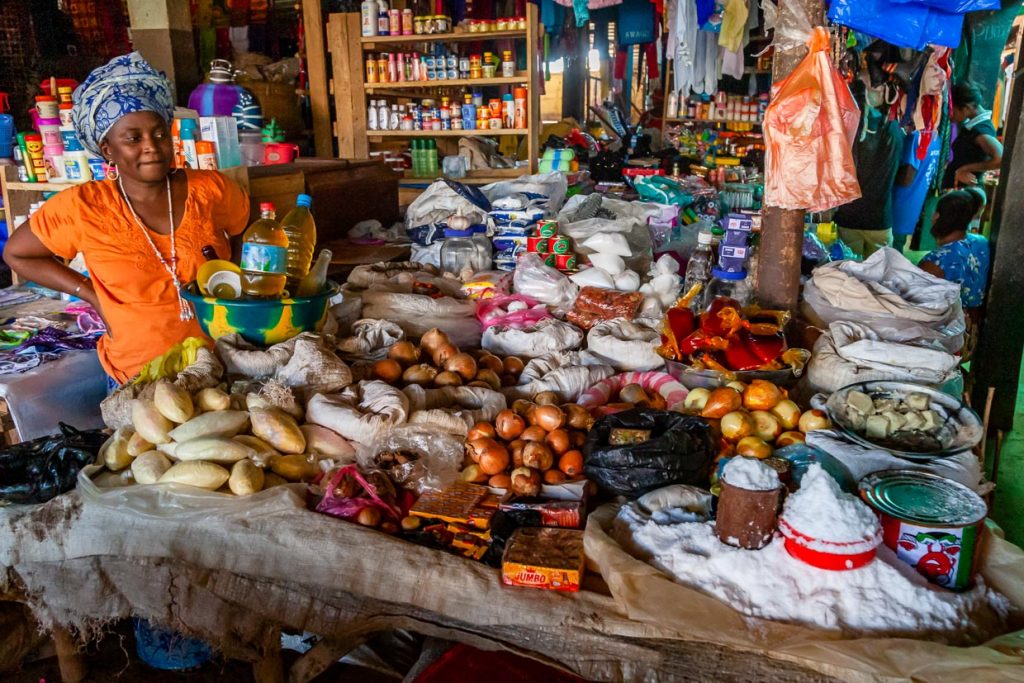
The cassava tuber is one of the most important sources of carbohydrates and is indispensable for nutrition in the tropics because the plant grows very well even during dry periods and, as a perennial, can be harvested all year round. Cooked cassava tubers can be easily peeled before consumption. Cassava leaves, unlike tubers, are rich in essential proteins.
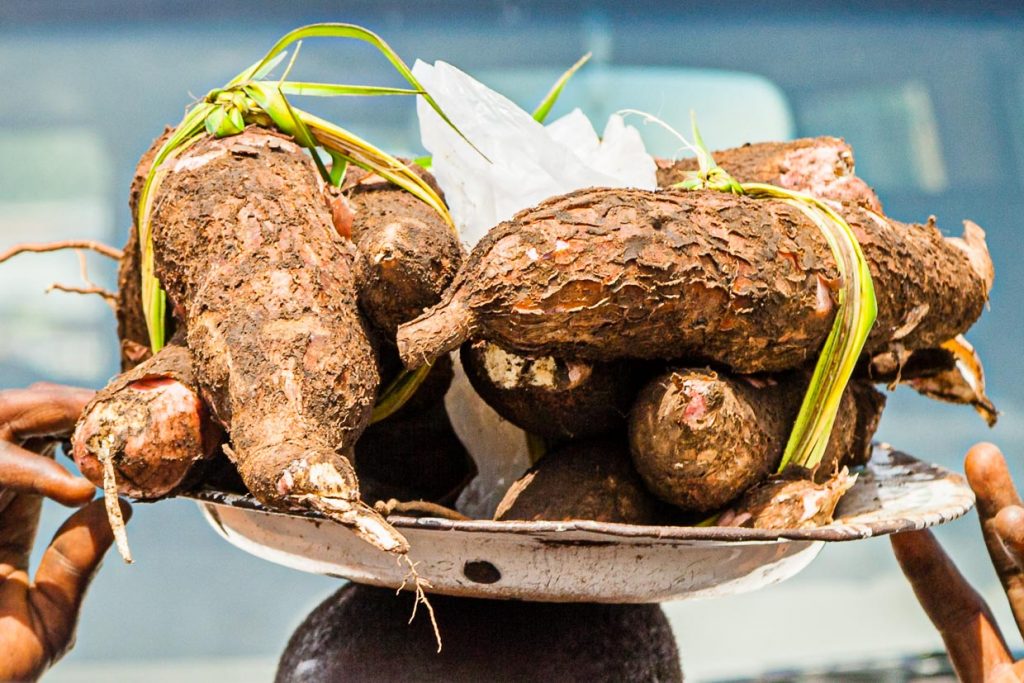
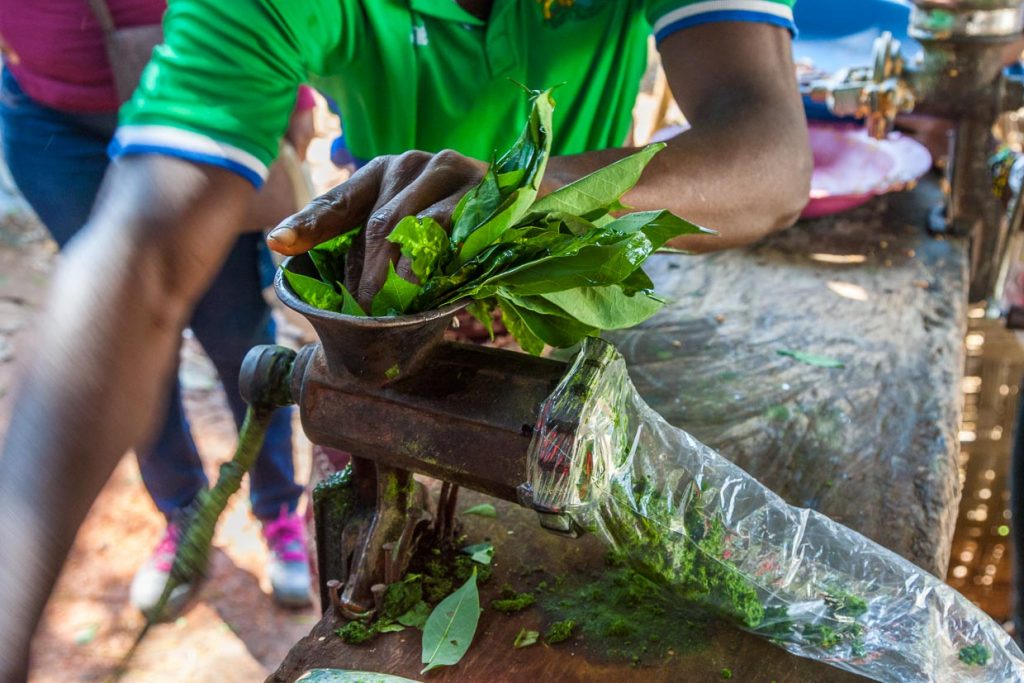
All dishes are simple and nutritious. Peanuts are made into a tasty soup often with a fish chowder. Vegetables like okras, eggplants or black-eyed beans are part of a varied cuisine, as well as millet and various sweet potatoes or plantains.
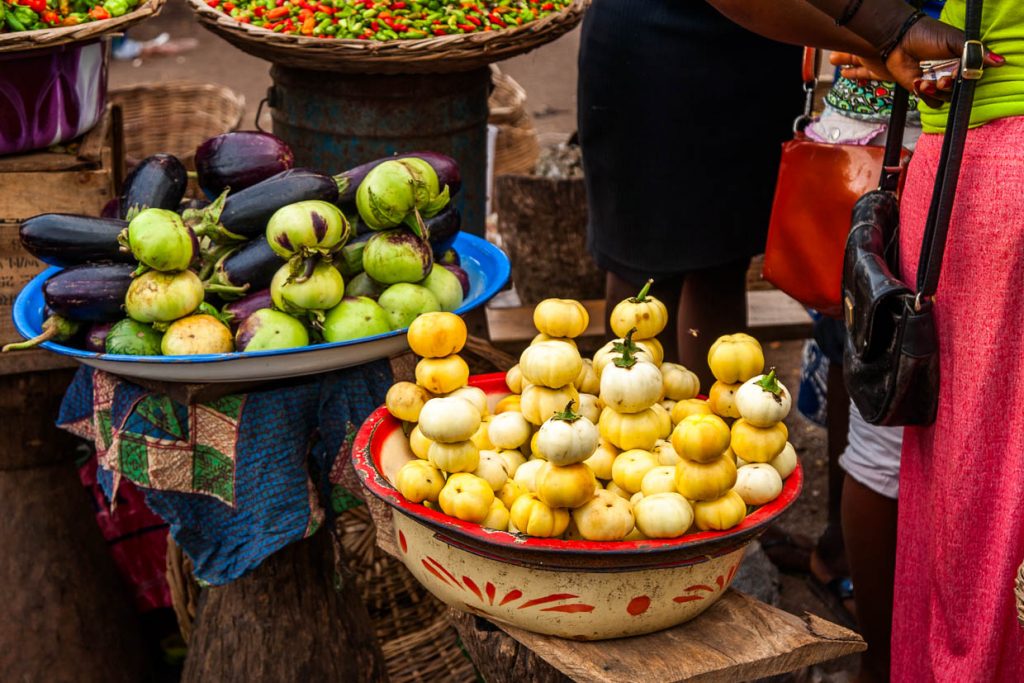
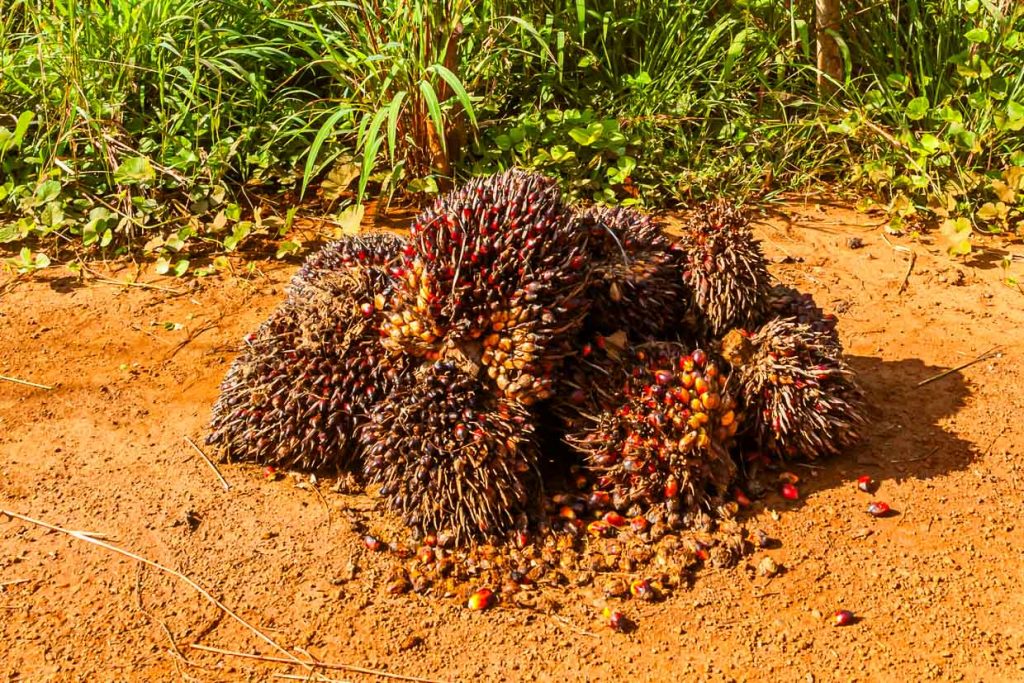
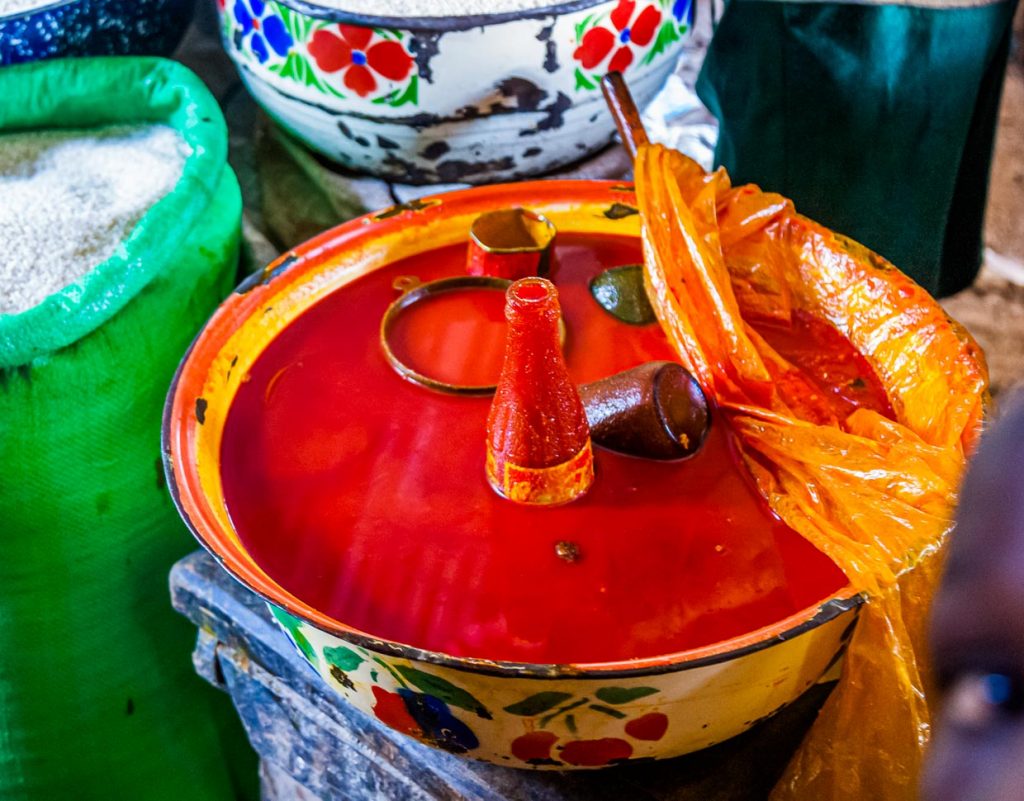
Fermented palm wine(poyo) is a popular drink among Sierra Leoneans. However, connoisseurs buy it only from personally known trusted people, who bring it down fresh from the palm crown and do not dilute it with water.
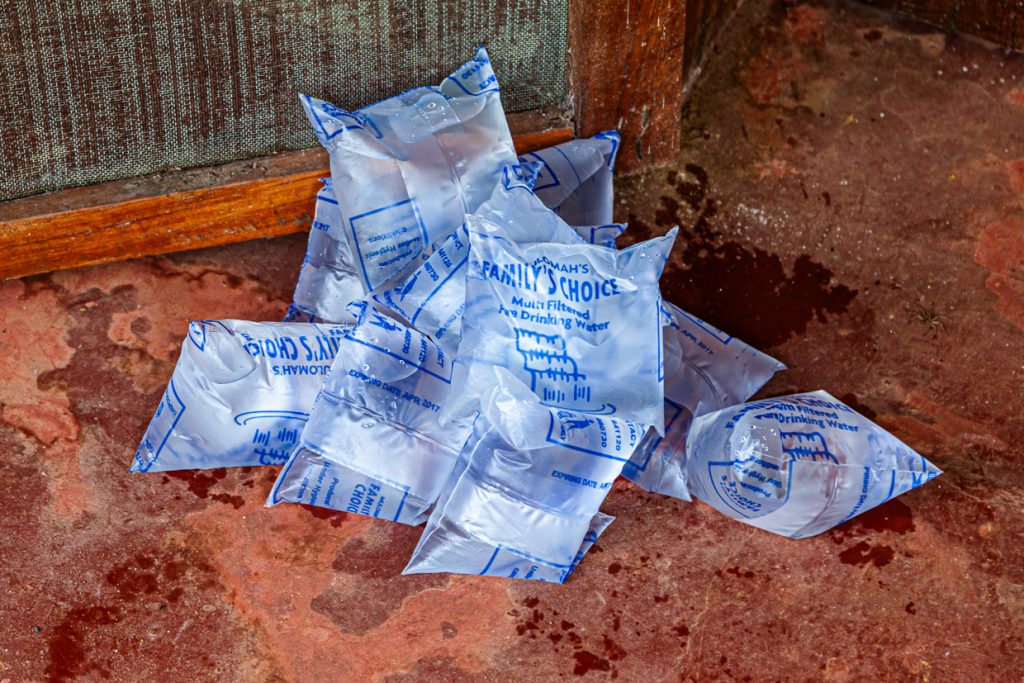
This research trip was supported in part by the Tourist Board Sierra Leone

